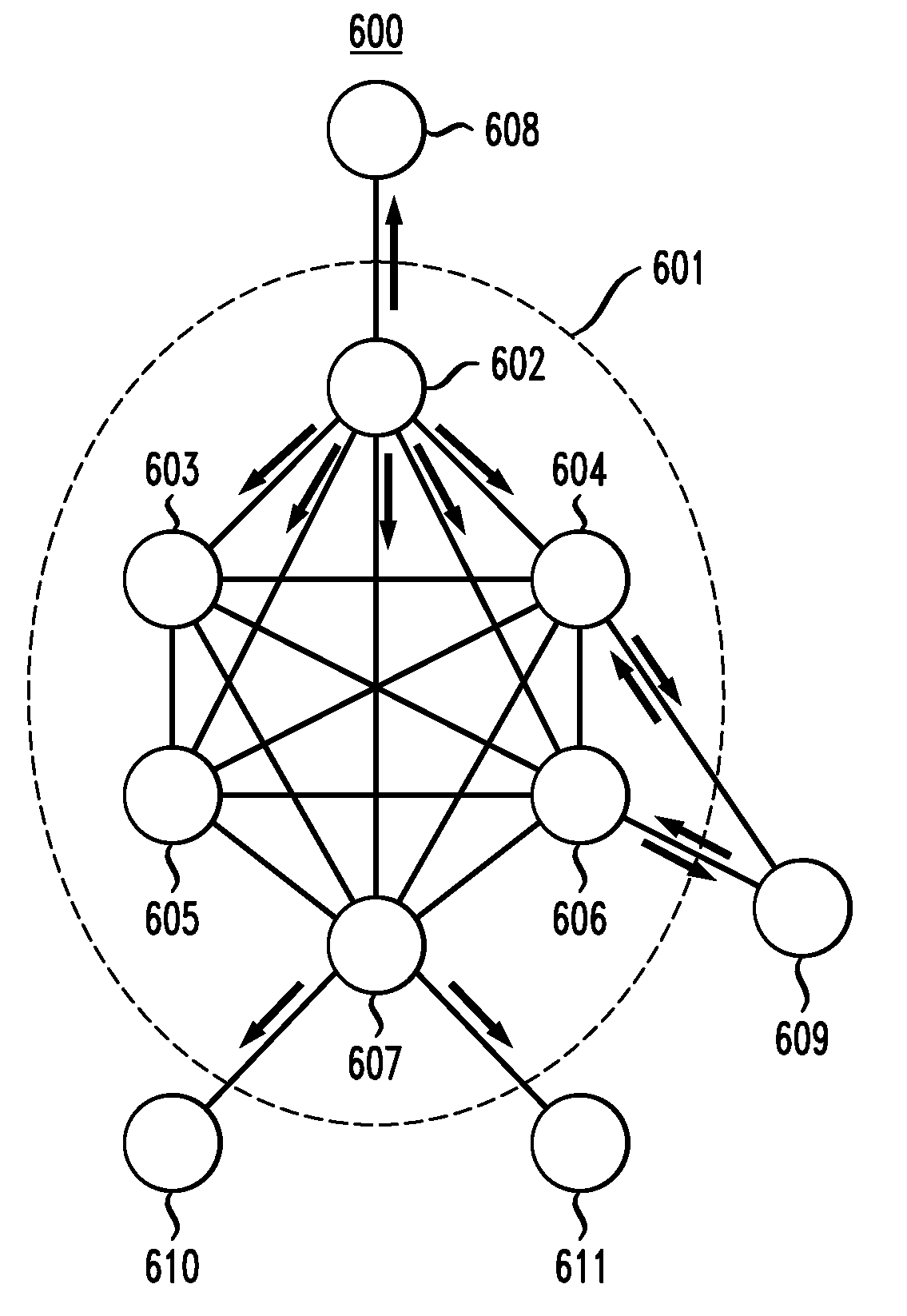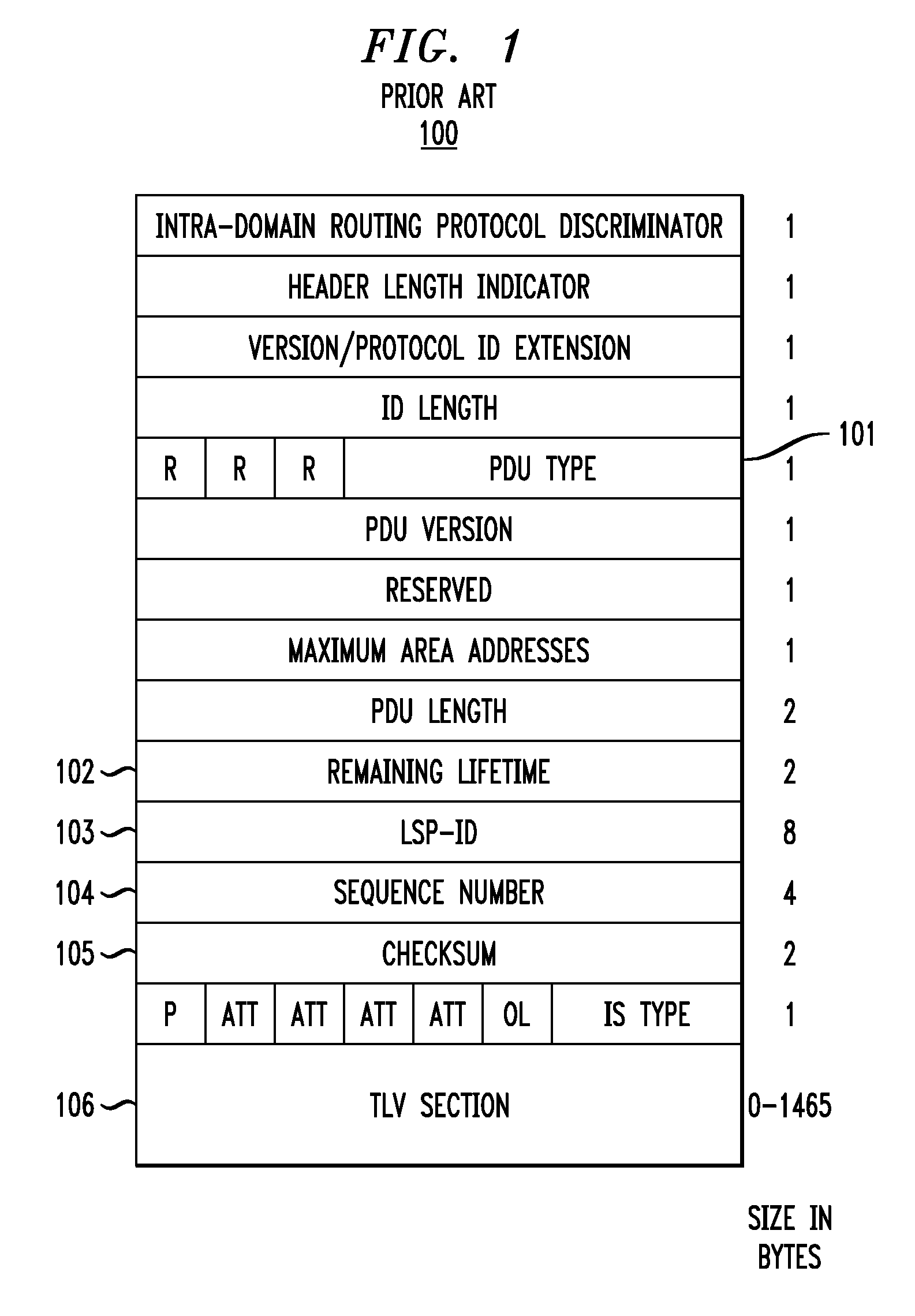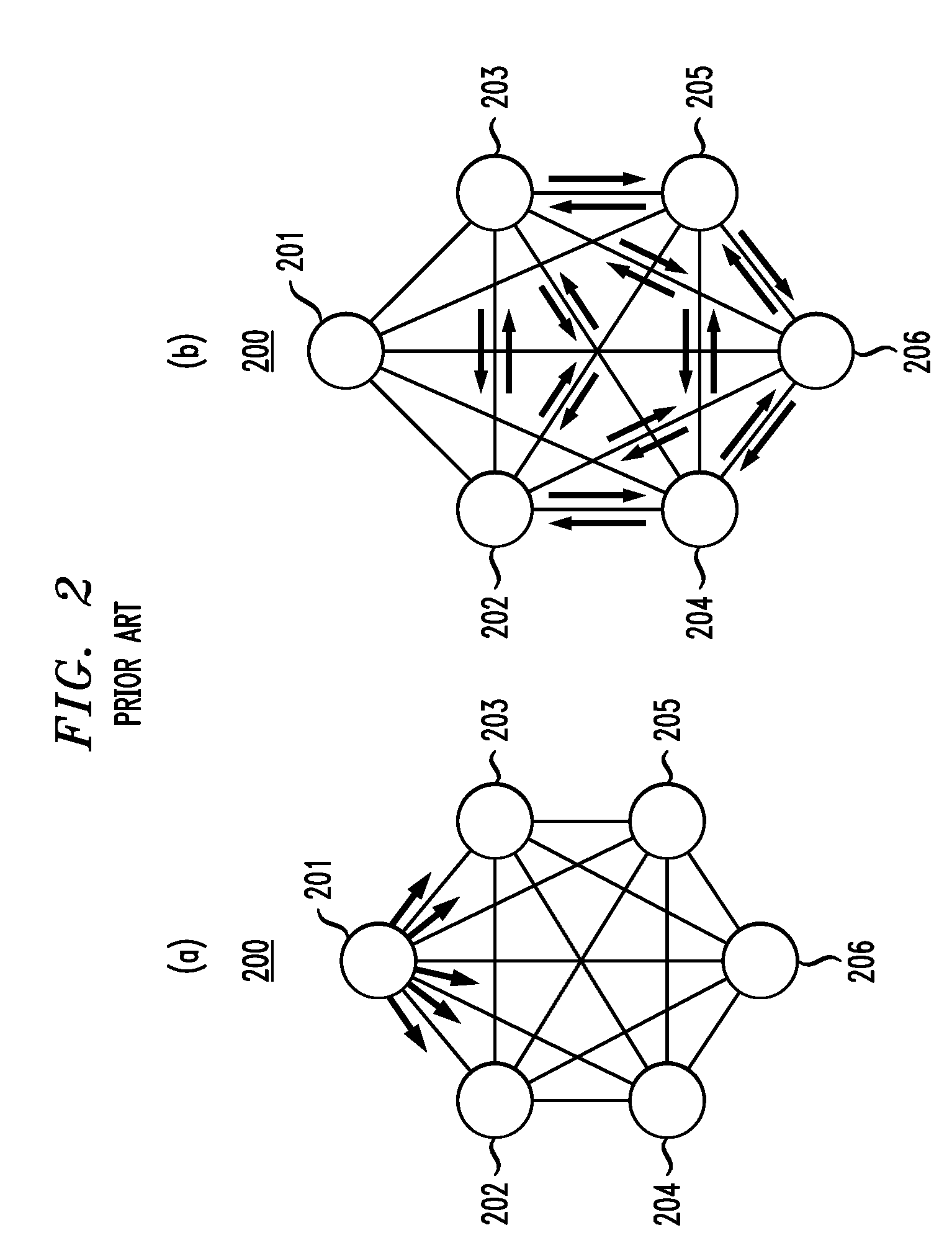Automatic maintenance of a distributed source tree (DST) network
a distributed source tree and network technology, applied in the field of data networks, can solve the problems of degrading affecting the performance of a node, and a node failing, so as to reduce the number of lsp packets sent out, avoid flooding lsp packets, and reduce the number of lsp packets
- Summary
- Abstract
- Description
- Claims
- Application Information
AI Technical Summary
Problems solved by technology
Method used
Image
Examples
Embodiment Construction
[0037]In one embodiment of the present invention, a distributed source tree (DST) network is automatically maintained. A DST network comprises a collection of interlinked nodes, where the nodes in the DST network form a fully connected network. The nodes in the DST network, herein referred to as internal nodes, may be also be linked to external nodes, i.e., nodes that are not part of the DST network. Thus, the DST network may be viewed as a fully connected sub-network within a larger network. Links between two internal node are referred to herein as internal links. The two nodes connected by a link are referred to herein as end-nodes. As noted above, the link between any two nodes of the DST network may be a virtual connection or a direct connection. All the links among internal nodes and links between internal nodes and external nodes are in DST active states. A DST network is initially set up administratively by defining the DST network and its member nodes. Once set up, the inter...
PUM
 Login to View More
Login to View More Abstract
Description
Claims
Application Information
 Login to View More
Login to View More - R&D
- Intellectual Property
- Life Sciences
- Materials
- Tech Scout
- Unparalleled Data Quality
- Higher Quality Content
- 60% Fewer Hallucinations
Browse by: Latest US Patents, China's latest patents, Technical Efficacy Thesaurus, Application Domain, Technology Topic, Popular Technical Reports.
© 2025 PatSnap. All rights reserved.Legal|Privacy policy|Modern Slavery Act Transparency Statement|Sitemap|About US| Contact US: help@patsnap.com



